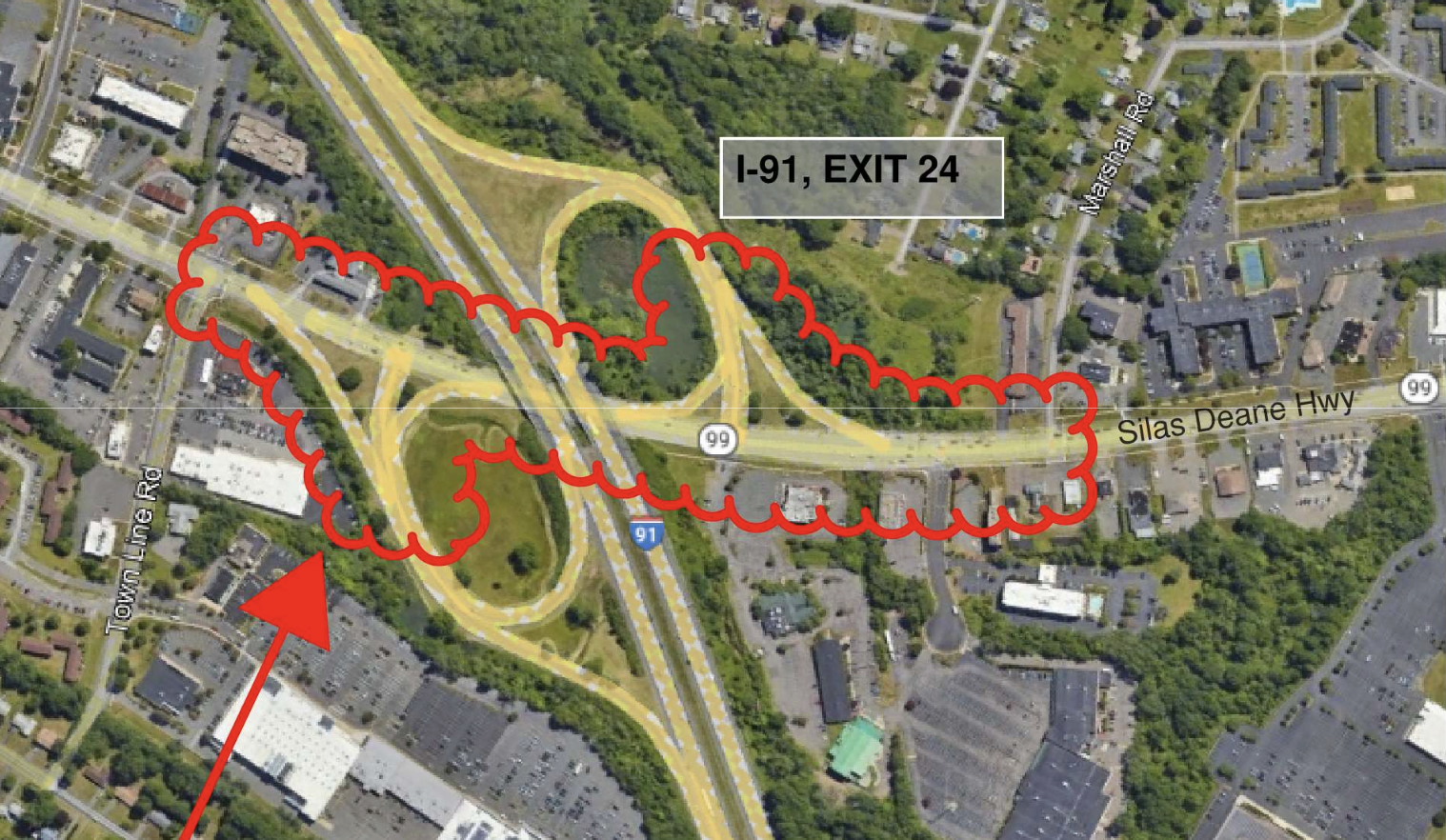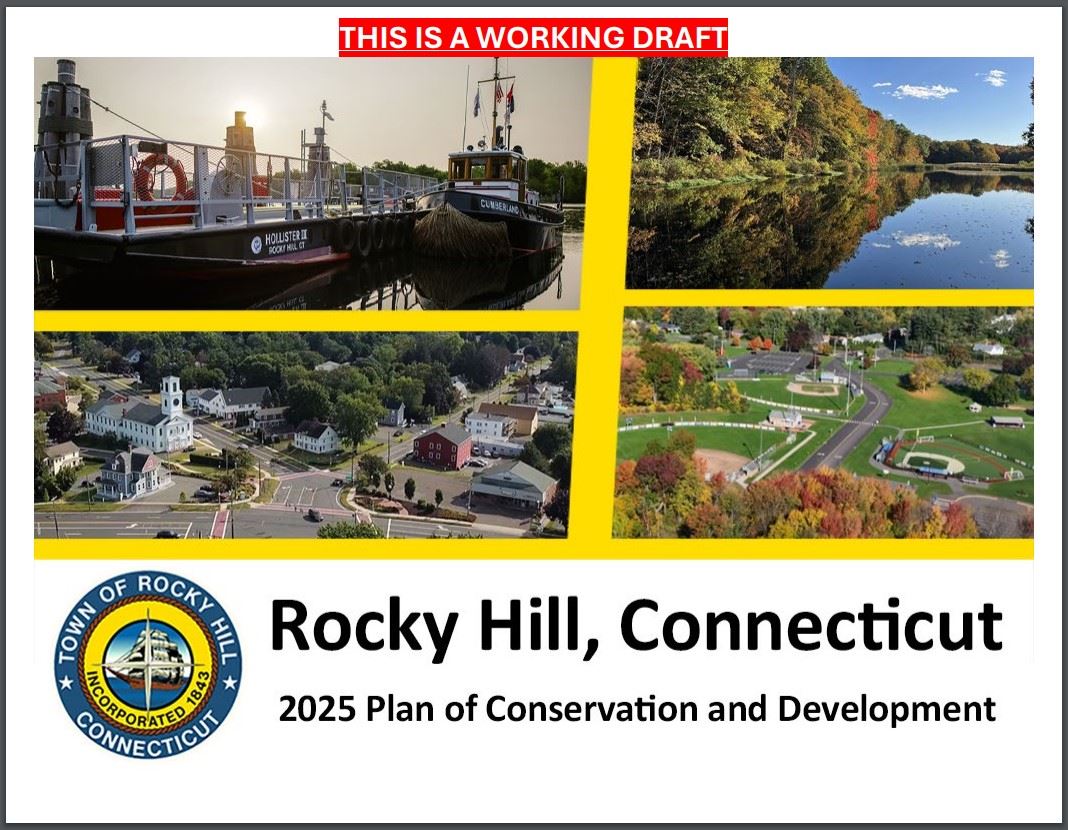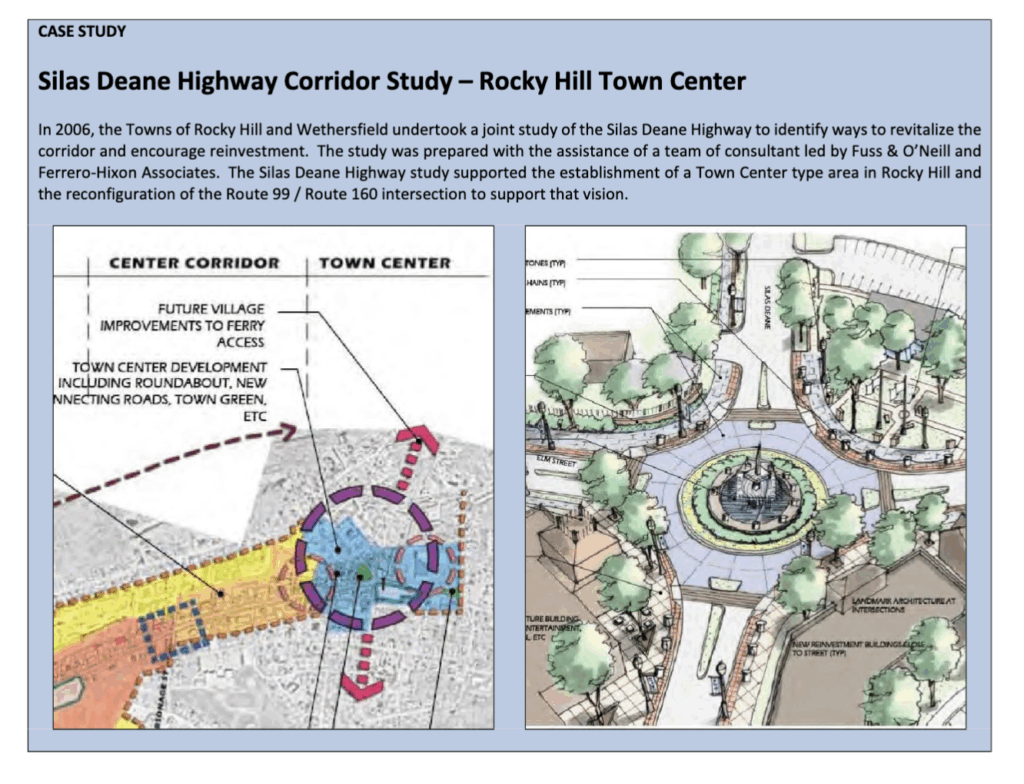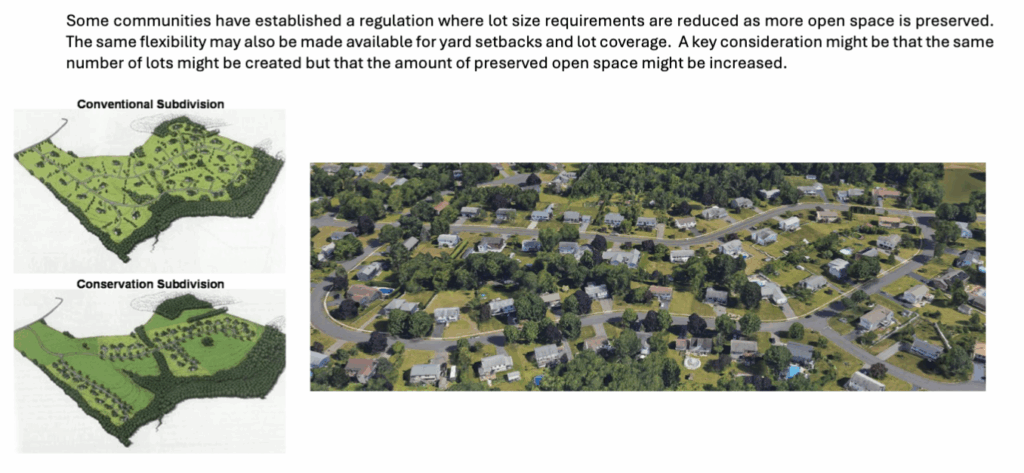Rocky Hill residents can look forward to new sidewalks in a much-needed part of town. Connecticut Department of Transportation (CTDOT) State Project No. 0118-0191 will install new sidewalks to both sides of Route 99 (Silas Deane Highway) from Town Line Road to Marshall Road including under the I-91 overpass in Rocky Hill, CT. Project Manager Melanie Zimyeski has stated the project will begin in the Spring of 2027.
If centering this project on active transportation, there is a lot of good news here. The stretch of road in question has three bus stops that promise to be adjacent to truly safe and comfortable crosswalks.
Those crosswalks are desperately needed. Back when the Town had a cute gelati shop named “Rita’s” I would pop over for an icy treat, and one day decided that I wanted to go from Rita’s to Orchard Street, en route to Parsonage, and back to Old Main Street. I could manage it, but only after dangerous crossing of highway lanes and ramps. Even with gelato to motivate me, the experience was a demonstration that Big Highway has taken so much away from the lived experience. Manageable fixes like investing in safe infrastructure can restore access to these “no go” zones.
Providing access to this stretch of road will enable pedestrians to visit more local sites on foot. Duck behind the cavernous Stop & Shop and Walmart structures, and you’ll find a car free fire lane that dumps you onto Orchard Street.
From there, take Orchard back to Parsonage and Rocky Hill High School, or, travel west on Water Street to Mill Woods Park, and beyond that, Wolcott Hill Road, and the extraordinary D&D Market. Now I’ve gotten off track, and I’m nowhere near the Silas Deane, but that is part of the point: connectivity between roadways, between residential, and between retail.
The Silas Deane Exit 24 project is paid for with federal and state money, and residents are rightly excited for it. In my experience, however, once there is a question of spending local resources on pedestrian infrastructure, the conversation swiftly changes. Inevitably people will argue against investing in the infrastructure, relying on what I call the “not alotta people” theory, which claims that the absence of pedestrians and cyclists on our roads is evidence that those people don’t exist.
Be careful questioning “how many people use” something when your observation is traveling by car at 35-40 mph. To see a road and accurately observe its users, I would recommend standing at the location for 15-20 minutes, and you will see multiple pedestrians and cyclists, and other modes, traveling through this area. If you stop for gas at “Mylz” across from Marshall Rd (and Taco Bell, and the Howard Johnson’s big chair!) keep an eye on the roadway under the 91 bridge. There is definitely a need for non-vehicular road users at this location. You will see activity there in what’s known as a “desire path,” where the grass is worn down to dirt, by shoes, and bike tires, over the years. When safer, that usage will increase exponentially, and the State’s management of this space will be worth every penny.
But let’s also consider that there is a very, very good reason why not alotta people use it.
“It” is dangerous, and if you have the luxury of options, you will avoid “it”. Any moral decision is based upon how many people would prefer to use “it” not how many people are currently (and reluctantly) using it. “Not alotta people” want to travel along that dark and dangerous walkway. But add safety elements, infrastructure, (and a tasty taco truck?), and suddenly people will want to go there! This is known as retrofitting a road to suit the changes in society. CTDOT State Project No. 0118-0191 is doing just that.
The proposed project is great, but can be greater as a launch point for even more safety, beautification, and a stronger sense of place. As suggested by local advocates including members of Bike Walk Wethersfield, the below recommendations for the State Project are worth mention:
- 10′ maximum travel lanes & 6′ sidewalks (from 11′ & 5′) on Route 99 between ramps
- Slow down the Silas Deane and prioritize pedestrian safety over “level of service”
- Add clear white light under the 91 overpass
- Add gateway murals
- Add a sign: “Welcome to Historic Rocky Hill: Everyone is Welcome Here”
- Add pollinator gardens & street trees
- Reimagine the Silas Deane Highway (which suggests high speed motorists) as the more inclusive Silas Deane Boulevard
Thank you to the Connecticut Department of Transportation for taking on this project. Our local leadership should follow this example and provide a clear path to develop our sidewalk networks. Rocky Hill’s roads should be for all their users, including pedestrians and cyclists. If you are excited for the upcoming changes in Silas Deane, consider joining the Walk Bike Rocky Hill community and supporting other changes to benefit our walk/bike infrastructure.
Opinion piece: This article reflects the position of the author and not necessarily that of the Democratic Town Committee.




